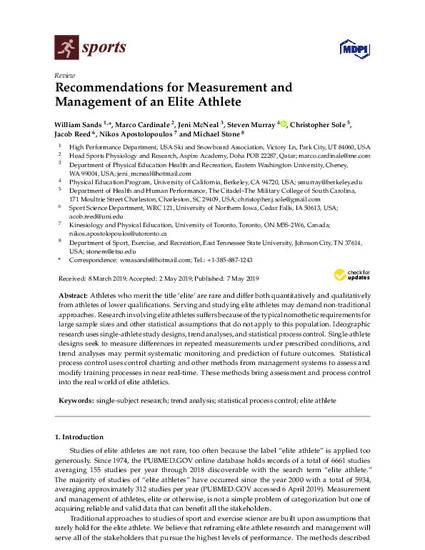
Athletes who merit the title ‘elite’ are rare and differ both quantitatively and qualitatively from athletes of lower qualifications. Serving and studying elite athletes may demand non-traditional approaches. Research involving elite athletes suffers because of the typical nomothetic requirements for large sample sizes and other statistical assumptions that do not apply to this population. Ideographic research uses single-athlete study designs, trend analyses, and statistical process control. Single-athlete designs seek to measure differences in repeated measurements under prescribed conditions, and trend analyses may permit systematic monitoring and prediction of future outcomes. Statistical process control uses control charting and other methods from management systems to assess and modify training processes in near real-time. These methods bring assessment and process control into the real world of elite athletics.
Available at: http://works.bepress.com/michael-stone/486/

© 2019 by the authors. This document was originally published in Sports.